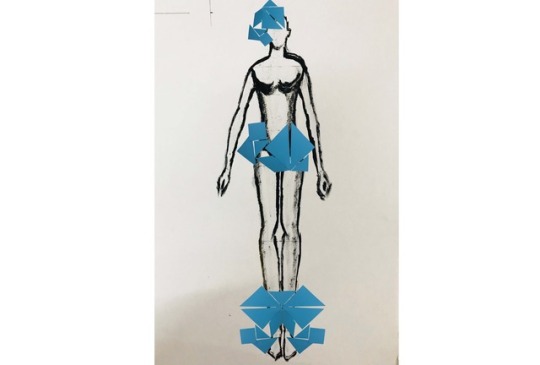#formgenerators
Explore tagged Tumblr posts
Text

Introduction: The Hidden Impact of Sunscreen on Marine Ecosystems When we apply sunscreen before heading into the ocean, few of us consider that this protective ritual might be harming the very environments we enjoy. Yet research has increasingly revealed that many conventional sunscreen ingredients can have devastating effects on coral reefs and marine ecosystems. This environmental impact has led to a growing movement toward "reef-safe" sunscreen options that provide effective protection without ecological harm. The concern is not theoretical—studies have documented that certain UV-filtering chemicals commonly found in sunscreens can damage coral DNA, disrupt reproduction, cause coral bleaching, and harm developing marine life even at extremely low concentrations. With an estimated 14,000 tons of sunscreen entering the world's oceans annually, the cumulative impact is significant enough that popular destinations including Hawaii, Key West, Palau, and parts of Mexico have enacted bans on sunscreens containing specific harmful ingredients. For environmentally conscious men who want to protect both their skin and the planet, understanding reef-safe sunscreen options is essential. This comprehensive guide explores the science behind sunscreen's environmental impact, clarifies what "reef-safe" actually means, and provides practical guidance for selecting products that offer effective protection while minimizing harm to marine ecosystems. Whether you're a surfer, diver, swimmer, or simply someone who cares about ocean conservation, this knowledge allows you to make informed choices that align with both your health needs and environmental values. The good news is that you don't need to choose between protecting your skin and protecting the planet—with the right information, you can effectively do both. The Science: How Conventional Sunscreens Impact Marine Life Key Ingredients of Concern Scientific research has identified several common sunscreen ingredients that pose significant risks to marine ecosystems: IngredientCommon NamesEnvironmental ImpactHuman Health ConsiderationsOxybenzoneBenzophenone-3Coral bleaching at extremely low concentrations; endocrine disruption in marine life; bioaccumulation in tissuesPotential hormone disruption; skin allergies; detected in human blood, urine, and breast milkOctinoxateEthylhexyl methoxycinnamateCoral bleaching; affects gene expression in coral; toxic to algae that support reef ecosystemsPotential hormone disruption; skin penetration concernsOctocryleneBioaccumulation in aquatic organisms; potential coral toxicity; degrades into benzophenone (a known carcinogen)Contact allergies; detected in human plasma; potential endocrine effects4-methylbenzylidene camphor (4MBC)Endocrine disruption in fish and other marine life; bioaccumulation in food chainRestricted in some countries due to endocrine concernsPABA and PABA derivativesPara-aminobenzoic acidCoral damage; potential genetic damage to marine organismsLargely phased out due to high allergic reaction ratesNanoparticles (zinc oxide and titanium dioxide)Nano-ZnO, Nano-TiO₂Potential toxicity to coral larvae and marine microorganisms when in nano formGenerally considered safe for human use, though research continues These ingredients can impact marine ecosystems through multiple mechanisms: Direct Toxicity - Even at concentrations as low as one part per trillion (equivalent to one drop in six Olympic-sized swimming pools), oxybenzone can trigger coral bleaching - Chemical filters can damage coral DNA and disrupt reproduction - Affects multiple life stages of coral and other marine organisms Bioaccumulation - Many sunscreen chemicals persist in the environment rather than breaking down - Accumulate in tissues of marine organisms and move up the food chain - Create long-term exposure even after initial contamination Endocrine Disruption - Mimics hormones in marine life, disrupting reproductive cycles - Affects development of fish, sea urchins, mussels, and other organisms - Can cause feminization of male fish and reproductive abnormalities Viral Activation - Some chemicals activate dormant viruses in symbiotic algae that live within coral - Leads to algae death and subsequent coral bleaching - Creates cascading effects throughout reef ecosystems The Pathway from Skin to Sea Understanding how sunscreen reaches marine environments helps explain the scope of the problem: Direct Water Contact - Estimated 25-30% of applied sunscreen washes off during swimming - Higher rates of wash-off in active water sports like surfing - Concentrated release in popular swimming and snorkeling locations Wastewater Systems - Sunscreen washed off in showers enters wastewater - Many wastewater treatment systems don't remove these specific chemicals - Eventually reaches oceans through outflows and runoff Indirect Environmental Transfer - Sunscreen on skin transfers to sand during beach activities - Tidal action and waves can wash these chemicals into the ocean - Creates "hotspots" of contamination at popular beach destinations The combination of these pathways means that sunscreen pollution affects marine environments globally, with particular concentration in popular coastal tourism destinations. Vulnerable Ecosystems and Regions While all marine environments can be affected by sunscreen pollution, certain ecosystems and regions face heightened vulnerability: Coral Reef Ecosystems - Particularly sensitive to chemical disruption - Often located in areas with high tourism activity - Already stressed by climate change, making chemical impacts more severe - Slow to recover from damage Enclosed or Semi-Enclosed Water Bodies - Limited water exchange reduces dilution of contaminants - Popular swimming areas often have higher concentrations - Examples include bays, lagoons, and reef-protected areas High-Tourism Coastal Regions - Hawaiian reefs receive an estimated 6,000 tons of sunscreen annually - Caribbean destinations experience concentrated sunscreen pollution - Mediterranean coastal areas show measurable sunscreen chemical accumulation - Australian Great Barrier Reef areas with high tourism show increased chemical presence These vulnerable areas have become the focus of both research and regulatory action, leading to the growing movement toward reef-safe alternatives. Understanding "Reef-Safe" Sunscreen Defining "Reef-Safe": The Regulatory Landscape The term "reef-safe" lacks a standardized legal definition or certification, creating potential confusion for consumers: Current Regulatory Approaches - Hawaii's ban focuses specifically on oxybenzone and octinoxate - Key West prohibits the same two ingredients - Palau's ban extends to 10 specific chemicals - Virgin Islands National Park bans oxybenzone, octinoxate, and octocrylene - Australia's Great Barrier Reef Marine Park recommends against several chemicals but has no formal ban Industry Self-Regulation - No standardized certification process exists - Various eco-labels and claims with different standards - Some brands conduct independent testing - Growing consensus around avoiding specific ingredients Consumer Guidance - Look beyond marketing claims to ingredient lists - Understand that "reef-friendly" and similar terms have no regulated meaning - Consider multiple environmental factors beyond just reef impact - Research brand transparency regarding environmental claims This regulatory patchwork means consumers must take an active role in understanding product formulations rather than relying solely on marketing claims. Mineral vs. Chemical Filters: Environmental Considerations The two primary approaches to UV protection—mineral and chemical filters—have different environmental implications: Mineral (Physical) Filters - Primary ingredients: Zinc oxide and titanium dioxide - Environmental benefits: - Do not dissolve in water - Generally considered safer for marine ecosystems - Not linked to coral bleaching when in non-nano form - More stable and less likely to degrade into harmful byproducts - Environmental concerns: - Nanoparticle forms may pose risks to some marine organisms - Mining impact of mineral ingredients - Manufacturing processes and energy use Chemical Filters - Multiple synthetic compounds that absorb UV radiation - Environmental concerns: - Many are linked to coral bleaching and marine toxicity - Persistence in environment - Bioaccumulation potential - Endocrine disruption in marine life - Environmental benefits: - Some newer-generation filters appear to have lower environmental impact - Ongoing research into biodegradable options - Some formulations require less material for equivalent protection Hybrid Approaches - Combining lower-impact chemical filters with mineral ingredients - Using encapsulation technologies to reduce environmental release - Incorporating antioxidants and other ingredients that may mitigate damage The current scientific consensus favors non-nano mineral filters as the safest option for marine environments, though research continues into the ecological impact of all sunscreen ingredients. Beyond Reef Safety: Other Environmental Considerations A truly environmentally responsible sunscreen considers multiple ecological factors beyond just reef impact: Packaging Sustainability - Plastic packaging contributes to marine debris - Look for: - Recycled/recyclable materials - Biodegradable packaging - Minimal packaging designs - Refillable options Manufacturing Practices - Energy use and carbon footprint - Water consumption and pollution - Ethical sourcing of ingredients - Corporate sustainability commitments Biodegradability - How quickly and completely the formula breaks down in the environment - Potential for persistent environmental contamination - Breakdown products and their safety Additional Ingredients - Palm oil sustainability concerns - Microplastic content (such as polymers) - Preservatives with environmental impacts - Fragrance components with ecological effects A holistic approach to environmental impact considers the entire lifecycle of the product, from ingredient sourcing through manufacturing to eventual environmental fate. Selecting Truly Reef-Safe Sunscreen Ingredient Analysis: What to Look For and Avoid When evaluating sunscreen for reef safety, both the presence of harmful ingredients and the quality of beneficial ingredients matters: Ingredients to Avoid - Oxybenzone (Benzophenone-3) - Octinoxate (Ethylhexyl methoxycinnamate) - Octocrylene - 4-methylbenzylidene camphor (4MBC) - PABA and PABA derivatives - Nano-sized particles (often listed as "nano titanium dioxide" or "nano zinc oxide") - Avobenzone - Homosalate - Octisalate - Enzacamene Preferred Active Ingredients - Non-nano zinc oxide (particle size >100nm) - Non-nano titanium dioxide (particle size >100nm) Beneficial Supporting Ingredients - Antioxidants that enhance protection and reduce free radical damage - Natural oils with inherent (though low) SPF properties - Anti-inflammatory botanicals that support skin recovery - Biodegradable emulsifiers and stabilizers How to Verify Particle Size Since "non-nano" is crucial for mineral sunscreens but not always clearly labeled: - Look for explicit "non-nano" claims - Contact manufacturers for particle size information - Support brands that provide transparent information - Consider products specifically tested for reef safety Decoding Marketing Claims and Certifications With no standardized certification for reef safety, evaluating marketing claims requires careful consideration: Common Claims and Their Meaning - "Reef-Safe/Reef-Friendly": Unregulated term, requires ingredient verification - "Mineral-Based": May contain both mineral and chemical filters; check for "only" or "100%" mineral - "Ocean-Safe": Similar to reef-safe, no standard definition - "Biodegradable": Should specify testing standards and timeframe - "Non-Nano": Should specify particle size or testing methodology Emerging Certifications - Protect Land + Sea Certification: Prohibits specific ingredients of concern - Reef Safe (Tropical Seas): Testing-based certification program - 1% For The Planet: Not specific to reef safety but indicates environmental commitment - Environmental Working Group (EWG) Verification: Evaluates human and environmental safety Questions to Ask Brands - "What is the particle size of your mineral ingredients?" - "Has your product been tested specifically for reef safety?" - "What standards do you use to verify your environmental claims?" - "Do you have environmental scientists involved in your formulation process?" Transparency in answering these questions often indicates a brand's genuine commitment to environmental responsibility versus marketing-driven claims. Performance Considerations: Efficacy and Usability Environmental responsibility shouldn't come at the expense of effective protection or practical usability: Protection Factors - Broad-spectrum coverage (UVA and UVB) - Adequate SPF rating (minimum SPF 30) - Water resistance appropriate for activities - Photostability (maintains protection during exposure) Application Characteristics - Spreadability and coverage - White cast (particularly relevant for mineral formulations) - Texture and feel on skin - Compatibility with active lifestyles Practical Considerations - Reapplication ease - Eye stinging potential - Residue on hands affecting grip (for water sports) - Packaging practicality for intended use Skin Compatibility - Potential for irritation or sensitization - Suitability for skin type - Comedogenicity (pore-clogging potential) - Compatibility with facial hair The ideal reef-safe sunscreen balances environmental responsibility with these practical performance factors to ensure consistent use and adequate protection. Valuxxo Product Spotlight Valuxxo offers several reef-safe sun protection options designed specifically for environmentally conscious men: Mineral Sun Stick SPF50 - Reef-safe formulation: 100% non-nano mineral protection - Key environmental benefits: Plastic-minimal packaging, biodegradable formula, no harmful filters - Performance highlights: Maximum protection, water-resistant, no white cast - Best for: Face application, water activities, travel Mineral Tinted Sun Stick SPF50 - Reef-safe formulation: Non-nano mineral filters with natural iron oxides for tint - Key environmental benefits: Reduced packaging waste, reef-safe ingredients - Performance highlights: Universal tint eliminates white cast, maximum protection - Best for: Men who want invisible mineral protection for face and targeted areas Mineral Water Resistant Sunscreen SPF30 Face & Body - Reef-safe formulation: Non-nano zinc oxide as primary filter - Key environmental benefits: Biodegradable formula, sustainably sourced botanicals - Performance highlights: Comfortable application, suitable for sensitive skin - Best for: Full-body protection during water activities Mineral Tinted Sunscreen SPF30 All Valuxxo sun protection products feature: - Zero oxybenzone, octinoxate, and other reef-harming chemicals - Non-nano mineral filters for effective, environmentally responsible protection - Minimal, recyclable packaging - Formulations tested for biodegradability Practical Application Strategies Maximizing Protection While Minimizing Environmental Impact Strategic application approaches can enhance protection while reducing environmental impact: Apply Before Arriving at Water - Apply sunscreen 15-30 minutes before beach/water arrival - Allows product to bind to skin, reducing wash-off - Minimizes direct product entry into sensitive environments - Creates more effective protection Strategic Coverage Approaches - Use higher SPF, more water-resistant formulations for exposed areas - Supplement with UPF clothing for body coverage - Focus mineral products on face, ears, and shoulders - Consider rash guards and swim shirts for extended water activities Reapplication Strategies - Exit water for reapplication when possible - Reapply away from water's edge - Use stick formulations for precise application without excess - Consider UPF clothing instead of reapplication for extended water activities Quantity Optimization - Use appropriate amount for effective protection (approximately 1oz/30ml for full body) - Apply systematically to ensure complete coverage without excess - Consider stick or roll-on formats for more precise application - Use specialized face formulations for face to avoid over-application of body products UPF Clothing: The First Line of Defense UPF (Ultraviolet Protection Factor) clothing provides reliable protection without environmental impact: Environmental Benefits - Zero chemical wash-off into water - Reduced sunscreen quantity needed - Typically longer-lasting than sunscreen application - No packaging waste from repeated sunscreen purchases Protection Benefits - Consistent protection without reapplication - No missed spots or uneven application - Often provides UPF 50+ (blocks 98%+ of UV) - Remains effective when wet Strategic UPF Garment Selection - Rash guards/swim shirts for upper body protection - Swim leggings for lower body during water sports - Full-coverage swimwear for maximum protection - UPF hats with neck coverage for head and neck Complementary Approach - Use UPF clothing for large body areas - Apply reef-safe sunscreen only to exposed areas - Focus on face, hands, feet, and other uncovered zones - Significantly reduces total sunscreen use and environmental impact Travel Considerations for Reef Destinations When traveling to sensitive marine ecosystems, additional considerations help minimize impact: Destination Research - Check local sunscreen regulations before traveling - Research particularly sensitive reef areas at your destination - Understand local marine conservation priorities - Support destinations with strong environmental protection measures Packing Strategies - Bring sufficient reef-safe sunscreen from home - Pack multiple UPF garments to reduce sunscreen needs - Consider packable shade structures for beach use - Include reef-safe after-sun products for recovery Local Behavior Adaptations - Shower before entering ocean to remove other products - Time water activities for lower-UV periods (before 10am, after 4pm) - Seek shade during peak UV hours - Follow all local guidelines for reef protection Supporting Conservation - Participate in reef conservation activities when available - Support businesses with strong environmental practices - Share knowledge about reef protection with fellow travelers - Consider carbon offset programs for travel impact Beyond Sunscreen: Comprehensive Ocean-Friendly Sun Protection The Protection Hierarchy: A Systematic Approach Environmentally responsible sun protection follows a hierarchical approach that minimizes reliance on any product entering the water: Tier 1: Avoidance and Timing - Plan water activities for early morning or late afternoon - Check UV index and adjust behavior accordingly - Limit water time during peak UV hours (10am-4pm) - Seek natural shade when possible Tier 2: Physical Barriers - UPF clothing covering maximum body area - Broad-brimmed, secured hats - UV-filtering sunglasses with straps - Portable shade structures for beach use Tier 3: Reef-Safe Topical Protection - Non-nano mineral sunscreen for exposed areas - Appropriate application timing and technique - Strategic reapplication away from water - After-sun care to support skin recovery This hierarchy emphasizes that reef-safe sunscreen, while important, should be the final component of a comprehensive protection strategy rather than the primary defense. Read the full article
0 notes
Text

Introduction: The Hidden Impact of Sunscreen on Marine Ecosystems When we apply sunscreen before heading into the ocean, few of us consider that this protective ritual might be harming the very environments we enjoy. Yet research has increasingly revealed that many conventional sunscreen ingredients can have devastating effects on coral reefs and marine ecosystems. This environmental impact has led to a growing movement toward "reef-safe" sunscreen options that provide effective protection without ecological harm. The concern is not theoretical—studies have documented that certain UV-filtering chemicals commonly found in sunscreens can damage coral DNA, disrupt reproduction, cause coral bleaching, and harm developing marine life even at extremely low concentrations. With an estimated 14,000 tons of sunscreen entering the world's oceans annually, the cumulative impact is significant enough that popular destinations including Hawaii, Key West, Palau, and parts of Mexico have enacted bans on sunscreens containing specific harmful ingredients. For environmentally conscious men who want to protect both their skin and the planet, understanding reef-safe sunscreen options is essential. This comprehensive guide explores the science behind sunscreen's environmental impact, clarifies what "reef-safe" actually means, and provides practical guidance for selecting products that offer effective protection while minimizing harm to marine ecosystems. Whether you're a surfer, diver, swimmer, or simply someone who cares about ocean conservation, this knowledge allows you to make informed choices that align with both your health needs and environmental values. The good news is that you don't need to choose between protecting your skin and protecting the planet—with the right information, you can effectively do both. The Science: How Conventional Sunscreens Impact Marine Life Key Ingredients of Concern Scientific research has identified several common sunscreen ingredients that pose significant risks to marine ecosystems: IngredientCommon NamesEnvironmental ImpactHuman Health ConsiderationsOxybenzoneBenzophenone-3Coral bleaching at extremely low concentrations; endocrine disruption in marine life; bioaccumulation in tissuesPotential hormone disruption; skin allergies; detected in human blood, urine, and breast milkOctinoxateEthylhexyl methoxycinnamateCoral bleaching; affects gene expression in coral; toxic to algae that support reef ecosystemsPotential hormone disruption; skin penetration concernsOctocryleneBioaccumulation in aquatic organisms; potential coral toxicity; degrades into benzophenone (a known carcinogen)Contact allergies; detected in human plasma; potential endocrine effects4-methylbenzylidene camphor (4MBC)Endocrine disruption in fish and other marine life; bioaccumulation in food chainRestricted in some countries due to endocrine concernsPABA and PABA derivativesPara-aminobenzoic acidCoral damage; potential genetic damage to marine organismsLargely phased out due to high allergic reaction ratesNanoparticles (zinc oxide and titanium dioxide)Nano-ZnO, Nano-TiO₂Potential toxicity to coral larvae and marine microorganisms when in nano formGenerally considered safe for human use, though research continues These ingredients can impact marine ecosystems through multiple mechanisms: Direct Toxicity - Even at concentrations as low as one part per trillion (equivalent to one drop in six Olympic-sized swimming pools), oxybenzone can trigger coral bleaching - Chemical filters can damage coral DNA and disrupt reproduction - Affects multiple life stages of coral and other marine organisms Bioaccumulation - Many sunscreen chemicals persist in the environment rather than breaking down - Accumulate in tissues of marine organisms and move up the food chain - Create long-term exposure even after initial contamination Endocrine Disruption - Mimics hormones in marine life, disrupting reproductive cycles - Affects development of fish, sea urchins, mussels, and other organisms - Can cause feminization of male fish and reproductive abnormalities Viral Activation - Some chemicals activate dormant viruses in symbiotic algae that live within coral - Leads to algae death and subsequent coral bleaching - Creates cascading effects throughout reef ecosystems The Pathway from Skin to Sea Understanding how sunscreen reaches marine environments helps explain the scope of the problem: Direct Water Contact - Estimated 25-30% of applied sunscreen washes off during swimming - Higher rates of wash-off in active water sports like surfing - Concentrated release in popular swimming and snorkeling locations Wastewater Systems - Sunscreen washed off in showers enters wastewater - Many wastewater treatment systems don't remove these specific chemicals - Eventually reaches oceans through outflows and runoff Indirect Environmental Transfer - Sunscreen on skin transfers to sand during beach activities - Tidal action and waves can wash these chemicals into the ocean - Creates "hotspots" of contamination at popular beach destinations The combination of these pathways means that sunscreen pollution affects marine environments globally, with particular concentration in popular coastal tourism destinations. Vulnerable Ecosystems and Regions While all marine environments can be affected by sunscreen pollution, certain ecosystems and regions face heightened vulnerability: Coral Reef Ecosystems - Particularly sensitive to chemical disruption - Often located in areas with high tourism activity - Already stressed by climate change, making chemical impacts more severe - Slow to recover from damage Enclosed or Semi-Enclosed Water Bodies - Limited water exchange reduces dilution of contaminants - Popular swimming areas often have higher concentrations - Examples include bays, lagoons, and reef-protected areas High-Tourism Coastal Regions - Hawaiian reefs receive an estimated 6,000 tons of sunscreen annually - Caribbean destinations experience concentrated sunscreen pollution - Mediterranean coastal areas show measurable sunscreen chemical accumulation - Australian Great Barrier Reef areas with high tourism show increased chemical presence These vulnerable areas have become the focus of both research and regulatory action, leading to the growing movement toward reef-safe alternatives. Understanding "Reef-Safe" Sunscreen Defining "Reef-Safe": The Regulatory Landscape The term "reef-safe" lacks a standardized legal definition or certification, creating potential confusion for consumers: Current Regulatory Approaches - Hawaii's ban focuses specifically on oxybenzone and octinoxate - Key West prohibits the same two ingredients - Palau's ban extends to 10 specific chemicals - Virgin Islands National Park bans oxybenzone, octinoxate, and octocrylene - Australia's Great Barrier Reef Marine Park recommends against several chemicals but has no formal ban Industry Self-Regulation - No standardized certification process exists - Various eco-labels and claims with different standards - Some brands conduct independent testing - Growing consensus around avoiding specific ingredients Consumer Guidance - Look beyond marketing claims to ingredient lists - Understand that "reef-friendly" and similar terms have no regulated meaning - Consider multiple environmental factors beyond just reef impact - Research brand transparency regarding environmental claims This regulatory patchwork means consumers must take an active role in understanding product formulations rather than relying solely on marketing claims. Mineral vs. Chemical Filters: Environmental Considerations The two primary approaches to UV protection—mineral and chemical filters—have different environmental implications: Mineral (Physical) Filters - Primary ingredients: Zinc oxide and titanium dioxide - Environmental benefits: - Do not dissolve in water - Generally considered safer for marine ecosystems - Not linked to coral bleaching when in non-nano form - More stable and less likely to degrade into harmful byproducts - Environmental concerns: - Nanoparticle forms may pose risks to some marine organisms - Mining impact of mineral ingredients - Manufacturing processes and energy use Chemical Filters - Multiple synthetic compounds that absorb UV radiation - Environmental concerns: - Many are linked to coral bleaching and marine toxicity - Persistence in environment - Bioaccumulation potential - Endocrine disruption in marine life - Environmental benefits: - Some newer-generation filters appear to have lower environmental impact - Ongoing research into biodegradable options - Some formulations require less material for equivalent protection Hybrid Approaches - Combining lower-impact chemical filters with mineral ingredients - Using encapsulation technologies to reduce environmental release - Incorporating antioxidants and other ingredients that may mitigate damage The current scientific consensus favors non-nano mineral filters as the safest option for marine environments, though research continues into the ecological impact of all sunscreen ingredients. Beyond Reef Safety: Other Environmental Considerations A truly environmentally responsible sunscreen considers multiple ecological factors beyond just reef impact: Packaging Sustainability - Plastic packaging contributes to marine debris - Look for: - Recycled/recyclable materials - Biodegradable packaging - Minimal packaging designs - Refillable options Manufacturing Practices - Energy use and carbon footprint - Water consumption and pollution - Ethical sourcing of ingredients - Corporate sustainability commitments Biodegradability - How quickly and completely the formula breaks down in the environment - Potential for persistent environmental contamination - Breakdown products and their safety Additional Ingredients - Palm oil sustainability concerns - Microplastic content (such as polymers) - Preservatives with environmental impacts - Fragrance components with ecological effects A holistic approach to environmental impact considers the entire lifecycle of the product, from ingredient sourcing through manufacturing to eventual environmental fate. Selecting Truly Reef-Safe Sunscreen Ingredient Analysis: What to Look For and Avoid When evaluating sunscreen for reef safety, both the presence of harmful ingredients and the quality of beneficial ingredients matters: Ingredients to Avoid - Oxybenzone (Benzophenone-3) - Octinoxate (Ethylhexyl methoxycinnamate) - Octocrylene - 4-methylbenzylidene camphor (4MBC) - PABA and PABA derivatives - Nano-sized particles (often listed as "nano titanium dioxide" or "nano zinc oxide") - Avobenzone - Homosalate - Octisalate - Enzacamene Preferred Active Ingredients - Non-nano zinc oxide (particle size >100nm) - Non-nano titanium dioxide (particle size >100nm) Beneficial Supporting Ingredients - Antioxidants that enhance protection and reduce free radical damage - Natural oils with inherent (though low) SPF properties - Anti-inflammatory botanicals that support skin recovery - Biodegradable emulsifiers and stabilizers How to Verify Particle Size Since "non-nano" is crucial for mineral sunscreens but not always clearly labeled: - Look for explicit "non-nano" claims - Contact manufacturers for particle size information - Support brands that provide transparent information - Consider products specifically tested for reef safety Decoding Marketing Claims and Certifications With no standardized certification for reef safety, evaluating marketing claims requires careful consideration: Common Claims and Their Meaning - "Reef-Safe/Reef-Friendly": Unregulated term, requires ingredient verification - "Mineral-Based": May contain both mineral and chemical filters; check for "only" or "100%" mineral - "Ocean-Safe": Similar to reef-safe, no standard definition - "Biodegradable": Should specify testing standards and timeframe - "Non-Nano": Should specify particle size or testing methodology Emerging Certifications - Protect Land + Sea Certification: Prohibits specific ingredients of concern - Reef Safe (Tropical Seas): Testing-based certification program - 1% For The Planet: Not specific to reef safety but indicates environmental commitment - Environmental Working Group (EWG) Verification: Evaluates human and environmental safety Questions to Ask Brands - "What is the particle size of your mineral ingredients?" - "Has your product been tested specifically for reef safety?" - "What standards do you use to verify your environmental claims?" - "Do you have environmental scientists involved in your formulation process?" Transparency in answering these questions often indicates a brand's genuine commitment to environmental responsibility versus marketing-driven claims. Performance Considerations: Efficacy and Usability Environmental responsibility shouldn't come at the expense of effective protection or practical usability: Protection Factors - Broad-spectrum coverage (UVA and UVB) - Adequate SPF rating (minimum SPF 30) - Water resistance appropriate for activities - Photostability (maintains protection during exposure) Application Characteristics - Spreadability and coverage - White cast (particularly relevant for mineral formulations) - Texture and feel on skin - Compatibility with active lifestyles Practical Considerations - Reapplication ease - Eye stinging potential - Residue on hands affecting grip (for water sports) - Packaging practicality for intended use Skin Compatibility - Potential for irritation or sensitization - Suitability for skin type - Comedogenicity (pore-clogging potential) - Compatibility with facial hair The ideal reef-safe sunscreen balances environmental responsibility with these practical performance factors to ensure consistent use and adequate protection. Valuxxo Product Spotlight Valuxxo offers several reef-safe sun protection options designed specifically for environmentally conscious men: Mineral Sun Stick SPF50 - Reef-safe formulation: 100% non-nano mineral protection - Key environmental benefits: Plastic-minimal packaging, biodegradable formula, no harmful filters - Performance highlights: Maximum protection, water-resistant, no white cast - Best for: Face application, water activities, travel Mineral Tinted Sun Stick SPF50 - Reef-safe formulation: Non-nano mineral filters with natural iron oxides for tint - Key environmental benefits: Reduced packaging waste, reef-safe ingredients - Performance highlights: Universal tint eliminates white cast, maximum protection - Best for: Men who want invisible mineral protection for face and targeted areas Mineral Water Resistant Sunscreen SPF30 Face & Body - Reef-safe formulation: Non-nano zinc oxide as primary filter - Key environmental benefits: Biodegradable formula, sustainably sourced botanicals - Performance highlights: Comfortable application, suitable for sensitive skin - Best for: Full-body protection during water activities Mineral Tinted Sunscreen SPF30 All Valuxxo sun protection products feature: - Zero oxybenzone, octinoxate, and other reef-harming chemicals - Non-nano mineral filters for effective, environmentally responsible protection - Minimal, recyclable packaging - Formulations tested for biodegradability Practical Application Strategies Maximizing Protection While Minimizing Environmental Impact Strategic application approaches can enhance protection while reducing environmental impact: Apply Before Arriving at Water - Apply sunscreen 15-30 minutes before beach/water arrival - Allows product to bind to skin, reducing wash-off - Minimizes direct product entry into sensitive environments - Creates more effective protection Strategic Coverage Approaches - Use higher SPF, more water-resistant formulations for exposed areas - Supplement with UPF clothing for body coverage - Focus mineral products on face, ears, and shoulders - Consider rash guards and swim shirts for extended water activities Reapplication Strategies - Exit water for reapplication when possible - Reapply away from water's edge - Use stick formulations for precise application without excess - Consider UPF clothing instead of reapplication for extended water activities Quantity Optimization - Use appropriate amount for effective protection (approximately 1oz/30ml for full body) - Apply systematically to ensure complete coverage without excess - Consider stick or roll-on formats for more precise application - Use specialized face formulations for face to avoid over-application of body products UPF Clothing: The First Line of Defense UPF (Ultraviolet Protection Factor) clothing provides reliable protection without environmental impact: Environmental Benefits - Zero chemical wash-off into water - Reduced sunscreen quantity needed - Typically longer-lasting than sunscreen application - No packaging waste from repeated sunscreen purchases Protection Benefits - Consistent protection without reapplication - No missed spots or uneven application - Often provides UPF 50+ (blocks 98%+ of UV) - Remains effective when wet Strategic UPF Garment Selection - Rash guards/swim shirts for upper body protection - Swim leggings for lower body during water sports - Full-coverage swimwear for maximum protection - UPF hats with neck coverage for head and neck Complementary Approach - Use UPF clothing for large body areas - Apply reef-safe sunscreen only to exposed areas - Focus on face, hands, feet, and other uncovered zones - Significantly reduces total sunscreen use and environmental impact Travel Considerations for Reef Destinations When traveling to sensitive marine ecosystems, additional considerations help minimize impact: Destination Research - Check local sunscreen regulations before traveling - Research particularly sensitive reef areas at your destination - Understand local marine conservation priorities - Support destinations with strong environmental protection measures Packing Strategies - Bring sufficient reef-safe sunscreen from home - Pack multiple UPF garments to reduce sunscreen needs - Consider packable shade structures for beach use - Include reef-safe after-sun products for recovery Local Behavior Adaptations - Shower before entering ocean to remove other products - Time water activities for lower-UV periods (before 10am, after 4pm) - Seek shade during peak UV hours - Follow all local guidelines for reef protection Supporting Conservation - Participate in reef conservation activities when available - Support businesses with strong environmental practices - Share knowledge about reef protection with fellow travelers - Consider carbon offset programs for travel impact Beyond Sunscreen: Comprehensive Ocean-Friendly Sun Protection The Protection Hierarchy: A Systematic Approach Environmentally responsible sun protection follows a hierarchical approach that minimizes reliance on any product entering the water: Tier 1: Avoidance and Timing - Plan water activities for early morning or late afternoon - Check UV index and adjust behavior accordingly - Limit water time during peak UV hours (10am-4pm) - Seek natural shade when possible Tier 2: Physical Barriers - UPF clothing covering maximum body area - Broad-brimmed, secured hats - UV-filtering sunglasses with straps - Portable shade structures for beach use Tier 3: Reef-Safe Topical Protection - Non-nano mineral sunscreen for exposed areas - Appropriate application timing and technique - Strategic reapplication away from water - After-sun care to support skin recovery This hierarchy emphasizes that reef-safe sunscreen, while important, should be the final component of a comprehensive protection strategy rather than the primary defense. Read the full article
0 notes
Text

Introduction: The Hidden Impact of Sunscreen on Marine Ecosystems When we apply sunscreen before heading into the ocean, few of us consider that this protective ritual might be harming the very environments we enjoy. Yet research has increasingly revealed that many conventional sunscreen ingredients can have devastating effects on coral reefs and marine ecosystems. This environmental impact has led to a growing movement toward "reef-safe" sunscreen options that provide effective protection without ecological harm. The concern is not theoretical—studies have documented that certain UV-filtering chemicals commonly found in sunscreens can damage coral DNA, disrupt reproduction, cause coral bleaching, and harm developing marine life even at extremely low concentrations. With an estimated 14,000 tons of sunscreen entering the world's oceans annually, the cumulative impact is significant enough that popular destinations including Hawaii, Key West, Palau, and parts of Mexico have enacted bans on sunscreens containing specific harmful ingredients. For environmentally conscious men who want to protect both their skin and the planet, understanding reef-safe sunscreen options is essential. This comprehensive guide explores the science behind sunscreen's environmental impact, clarifies what "reef-safe" actually means, and provides practical guidance for selecting products that offer effective protection while minimizing harm to marine ecosystems. Whether you're a surfer, diver, swimmer, or simply someone who cares about ocean conservation, this knowledge allows you to make informed choices that align with both your health needs and environmental values. The good news is that you don't need to choose between protecting your skin and protecting the planet—with the right information, you can effectively do both. The Science: How Conventional Sunscreens Impact Marine Life Key Ingredients of Concern Scientific research has identified several common sunscreen ingredients that pose significant risks to marine ecosystems: IngredientCommon NamesEnvironmental ImpactHuman Health ConsiderationsOxybenzoneBenzophenone-3Coral bleaching at extremely low concentrations; endocrine disruption in marine life; bioaccumulation in tissuesPotential hormone disruption; skin allergies; detected in human blood, urine, and breast milkOctinoxateEthylhexyl methoxycinnamateCoral bleaching; affects gene expression in coral; toxic to algae that support reef ecosystemsPotential hormone disruption; skin penetration concernsOctocryleneBioaccumulation in aquatic organisms; potential coral toxicity; degrades into benzophenone (a known carcinogen)Contact allergies; detected in human plasma; potential endocrine effects4-methylbenzylidene camphor (4MBC)Endocrine disruption in fish and other marine life; bioaccumulation in food chainRestricted in some countries due to endocrine concernsPABA and PABA derivativesPara-aminobenzoic acidCoral damage; potential genetic damage to marine organismsLargely phased out due to high allergic reaction ratesNanoparticles (zinc oxide and titanium dioxide)Nano-ZnO, Nano-TiO₂Potential toxicity to coral larvae and marine microorganisms when in nano formGenerally considered safe for human use, though research continues These ingredients can impact marine ecosystems through multiple mechanisms: Direct Toxicity - Even at concentrations as low as one part per trillion (equivalent to one drop in six Olympic-sized swimming pools), oxybenzone can trigger coral bleaching - Chemical filters can damage coral DNA and disrupt reproduction - Affects multiple life stages of coral and other marine organisms Bioaccumulation - Many sunscreen chemicals persist in the environment rather than breaking down - Accumulate in tissues of marine organisms and move up the food chain - Create long-term exposure even after initial contamination Endocrine Disruption - Mimics hormones in marine life, disrupting reproductive cycles - Affects development of fish, sea urchins, mussels, and other organisms - Can cause feminization of male fish and reproductive abnormalities Viral Activation - Some chemicals activate dormant viruses in symbiotic algae that live within coral - Leads to algae death and subsequent coral bleaching - Creates cascading effects throughout reef ecosystems The Pathway from Skin to Sea Understanding how sunscreen reaches marine environments helps explain the scope of the problem: Direct Water Contact - Estimated 25-30% of applied sunscreen washes off during swimming - Higher rates of wash-off in active water sports like surfing - Concentrated release in popular swimming and snorkeling locations Wastewater Systems - Sunscreen washed off in showers enters wastewater - Many wastewater treatment systems don't remove these specific chemicals - Eventually reaches oceans through outflows and runoff Indirect Environmental Transfer - Sunscreen on skin transfers to sand during beach activities - Tidal action and waves can wash these chemicals into the ocean - Creates "hotspots" of contamination at popular beach destinations The combination of these pathways means that sunscreen pollution affects marine environments globally, with particular concentration in popular coastal tourism destinations. Vulnerable Ecosystems and Regions While all marine environments can be affected by sunscreen pollution, certain ecosystems and regions face heightened vulnerability: Coral Reef Ecosystems - Particularly sensitive to chemical disruption - Often located in areas with high tourism activity - Already stressed by climate change, making chemical impacts more severe - Slow to recover from damage Enclosed or Semi-Enclosed Water Bodies - Limited water exchange reduces dilution of contaminants - Popular swimming areas often have higher concentrations - Examples include bays, lagoons, and reef-protected areas High-Tourism Coastal Regions - Hawaiian reefs receive an estimated 6,000 tons of sunscreen annually - Caribbean destinations experience concentrated sunscreen pollution - Mediterranean coastal areas show measurable sunscreen chemical accumulation - Australian Great Barrier Reef areas with high tourism show increased chemical presence These vulnerable areas have become the focus of both research and regulatory action, leading to the growing movement toward reef-safe alternatives. Understanding "Reef-Safe" Sunscreen Defining "Reef-Safe": The Regulatory Landscape The term "reef-safe" lacks a standardized legal definition or certification, creating potential confusion for consumers: Current Regulatory Approaches - Hawaii's ban focuses specifically on oxybenzone and octinoxate - Key West prohibits the same two ingredients - Palau's ban extends to 10 specific chemicals - Virgin Islands National Park bans oxybenzone, octinoxate, and octocrylene - Australia's Great Barrier Reef Marine Park recommends against several chemicals but has no formal ban Industry Self-Regulation - No standardized certification process exists - Various eco-labels and claims with different standards - Some brands conduct independent testing - Growing consensus around avoiding specific ingredients Consumer Guidance - Look beyond marketing claims to ingredient lists - Understand that "reef-friendly" and similar terms have no regulated meaning - Consider multiple environmental factors beyond just reef impact - Research brand transparency regarding environmental claims This regulatory patchwork means consumers must take an active role in understanding product formulations rather than relying solely on marketing claims. Mineral vs. Chemical Filters: Environmental Considerations The two primary approaches to UV protection—mineral and chemical filters—have different environmental implications: Mineral (Physical) Filters - Primary ingredients: Zinc oxide and titanium dioxide - Environmental benefits: - Do not dissolve in water - Generally considered safer for marine ecosystems - Not linked to coral bleaching when in non-nano form - More stable and less likely to degrade into harmful byproducts - Environmental concerns: - Nanoparticle forms may pose risks to some marine organisms - Mining impact of mineral ingredients - Manufacturing processes and energy use Chemical Filters - Multiple synthetic compounds that absorb UV radiation - Environmental concerns: - Many are linked to coral bleaching and marine toxicity - Persistence in environment - Bioaccumulation potential - Endocrine disruption in marine life - Environmental benefits: - Some newer-generation filters appear to have lower environmental impact - Ongoing research into biodegradable options - Some formulations require less material for equivalent protection Hybrid Approaches - Combining lower-impact chemical filters with mineral ingredients - Using encapsulation technologies to reduce environmental release - Incorporating antioxidants and other ingredients that may mitigate damage The current scientific consensus favors non-nano mineral filters as the safest option for marine environments, though research continues into the ecological impact of all sunscreen ingredients. Beyond Reef Safety: Other Environmental Considerations A truly environmentally responsible sunscreen considers multiple ecological factors beyond just reef impact: Packaging Sustainability - Plastic packaging contributes to marine debris - Look for: - Recycled/recyclable materials - Biodegradable packaging - Minimal packaging designs - Refillable options Manufacturing Practices - Energy use and carbon footprint - Water consumption and pollution - Ethical sourcing of ingredients - Corporate sustainability commitments Biodegradability - How quickly and completely the formula breaks down in the environment - Potential for persistent environmental contamination - Breakdown products and their safety Additional Ingredients - Palm oil sustainability concerns - Microplastic content (such as polymers) - Preservatives with environmental impacts - Fragrance components with ecological effects A holistic approach to environmental impact considers the entire lifecycle of the product, from ingredient sourcing through manufacturing to eventual environmental fate. Selecting Truly Reef-Safe Sunscreen Ingredient Analysis: What to Look For and Avoid When evaluating sunscreen for reef safety, both the presence of harmful ingredients and the quality of beneficial ingredients matters: Ingredients to Avoid - Oxybenzone (Benzophenone-3) - Octinoxate (Ethylhexyl methoxycinnamate) - Octocrylene - 4-methylbenzylidene camphor (4MBC) - PABA and PABA derivatives - Nano-sized particles (often listed as "nano titanium dioxide" or "nano zinc oxide") - Avobenzone - Homosalate - Octisalate - Enzacamene Preferred Active Ingredients - Non-nano zinc oxide (particle size >100nm) - Non-nano titanium dioxide (particle size >100nm) Beneficial Supporting Ingredients - Antioxidants that enhance protection and reduce free radical damage - Natural oils with inherent (though low) SPF properties - Anti-inflammatory botanicals that support skin recovery - Biodegradable emulsifiers and stabilizers How to Verify Particle Size Since "non-nano" is crucial for mineral sunscreens but not always clearly labeled: - Look for explicit "non-nano" claims - Contact manufacturers for particle size information - Support brands that provide transparent information - Consider products specifically tested for reef safety Decoding Marketing Claims and Certifications With no standardized certification for reef safety, evaluating marketing claims requires careful consideration: Common Claims and Their Meaning - "Reef-Safe/Reef-Friendly": Unregulated term, requires ingredient verification - "Mineral-Based": May contain both mineral and chemical filters; check for "only" or "100%" mineral - "Ocean-Safe": Similar to reef-safe, no standard definition - "Biodegradable": Should specify testing standards and timeframe - "Non-Nano": Should specify particle size or testing methodology Emerging Certifications - Protect Land + Sea Certification: Prohibits specific ingredients of concern - Reef Safe (Tropical Seas): Testing-based certification program - 1% For The Planet: Not specific to reef safety but indicates environmental commitment - Environmental Working Group (EWG) Verification: Evaluates human and environmental safety Questions to Ask Brands - "What is the particle size of your mineral ingredients?" - "Has your product been tested specifically for reef safety?" - "What standards do you use to verify your environmental claims?" - "Do you have environmental scientists involved in your formulation process?" Transparency in answering these questions often indicates a brand's genuine commitment to environmental responsibility versus marketing-driven claims. Performance Considerations: Efficacy and Usability Environmental responsibility shouldn't come at the expense of effective protection or practical usability: Protection Factors - Broad-spectrum coverage (UVA and UVB) - Adequate SPF rating (minimum SPF 30) - Water resistance appropriate for activities - Photostability (maintains protection during exposure) Application Characteristics - Spreadability and coverage - White cast (particularly relevant for mineral formulations) - Texture and feel on skin - Compatibility with active lifestyles Practical Considerations - Reapplication ease - Eye stinging potential - Residue on hands affecting grip (for water sports) - Packaging practicality for intended use Skin Compatibility - Potential for irritation or sensitization - Suitability for skin type - Comedogenicity (pore-clogging potential) - Compatibility with facial hair The ideal reef-safe sunscreen balances environmental responsibility with these practical performance factors to ensure consistent use and adequate protection. Valuxxo Product Spotlight Valuxxo offers several reef-safe sun protection options designed specifically for environmentally conscious men: Mineral Sun Stick SPF50 - Reef-safe formulation: 100% non-nano mineral protection - Key environmental benefits: Plastic-minimal packaging, biodegradable formula, no harmful filters - Performance highlights: Maximum protection, water-resistant, no white cast - Best for: Face application, water activities, travel Mineral Tinted Sun Stick SPF50 - Reef-safe formulation: Non-nano mineral filters with natural iron oxides for tint - Key environmental benefits: Reduced packaging waste, reef-safe ingredients - Performance highlights: Universal tint eliminates white cast, maximum protection - Best for: Men who want invisible mineral protection for face and targeted areas Mineral Water Resistant Sunscreen SPF30 Face & Body - Reef-safe formulation: Non-nano zinc oxide as primary filter - Key environmental benefits: Biodegradable formula, sustainably sourced botanicals - Performance highlights: Comfortable application, suitable for sensitive skin - Best for: Full-body protection during water activities Mineral Tinted Sunscreen SPF30 All Valuxxo sun protection products feature: - Zero oxybenzone, octinoxate, and other reef-harming chemicals - Non-nano mineral filters for effective, environmentally responsible protection - Minimal, recyclable packaging - Formulations tested for biodegradability Practical Application Strategies Maximizing Protection While Minimizing Environmental Impact Strategic application approaches can enhance protection while reducing environmental impact: Apply Before Arriving at Water - Apply sunscreen 15-30 minutes before beach/water arrival - Allows product to bind to skin, reducing wash-off - Minimizes direct product entry into sensitive environments - Creates more effective protection Strategic Coverage Approaches - Use higher SPF, more water-resistant formulations for exposed areas - Supplement with UPF clothing for body coverage - Focus mineral products on face, ears, and shoulders - Consider rash guards and swim shirts for extended water activities Reapplication Strategies - Exit water for reapplication when possible - Reapply away from water's edge - Use stick formulations for precise application without excess - Consider UPF clothing instead of reapplication for extended water activities Quantity Optimization - Use appropriate amount for effective protection (approximately 1oz/30ml for full body) - Apply systematically to ensure complete coverage without excess - Consider stick or roll-on formats for more precise application - Use specialized face formulations for face to avoid over-application of body products UPF Clothing: The First Line of Defense UPF (Ultraviolet Protection Factor) clothing provides reliable protection without environmental impact: Environmental Benefits - Zero chemical wash-off into water - Reduced sunscreen quantity needed - Typically longer-lasting than sunscreen application - No packaging waste from repeated sunscreen purchases Protection Benefits - Consistent protection without reapplication - No missed spots or uneven application - Often provides UPF 50+ (blocks 98%+ of UV) - Remains effective when wet Strategic UPF Garment Selection - Rash guards/swim shirts for upper body protection - Swim leggings for lower body during water sports - Full-coverage swimwear for maximum protection - UPF hats with neck coverage for head and neck Complementary Approach - Use UPF clothing for large body areas - Apply reef-safe sunscreen only to exposed areas - Focus on face, hands, feet, and other uncovered zones - Significantly reduces total sunscreen use and environmental impact Travel Considerations for Reef Destinations When traveling to sensitive marine ecosystems, additional considerations help minimize impact: Destination Research - Check local sunscreen regulations before traveling - Research particularly sensitive reef areas at your destination - Understand local marine conservation priorities - Support destinations with strong environmental protection measures Packing Strategies - Bring sufficient reef-safe sunscreen from home - Pack multiple UPF garments to reduce sunscreen needs - Consider packable shade structures for beach use - Include reef-safe after-sun products for recovery Local Behavior Adaptations - Shower before entering ocean to remove other products - Time water activities for lower-UV periods (before 10am, after 4pm) - Seek shade during peak UV hours - Follow all local guidelines for reef protection Supporting Conservation - Participate in reef conservation activities when available - Support businesses with strong environmental practices - Share knowledge about reef protection with fellow travelers - Consider carbon offset programs for travel impact Beyond Sunscreen: Comprehensive Ocean-Friendly Sun Protection The Protection Hierarchy: A Systematic Approach Environmentally responsible sun protection follows a hierarchical approach that minimizes reliance on any product entering the water: Tier 1: Avoidance and Timing - Plan water activities for early morning or late afternoon - Check UV index and adjust behavior accordingly - Limit water time during peak UV hours (10am-4pm) - Seek natural shade when possible Tier 2: Physical Barriers - UPF clothing covering maximum body area - Broad-brimmed, secured hats - UV-filtering sunglasses with straps - Portable shade structures for beach use Tier 3: Reef-Safe Topical Protection - Non-nano mineral sunscreen for exposed areas - Appropriate application timing and technique - Strategic reapplication away from water - After-sun care to support skin recovery This hierarchy emphasizes that reef-safe sunscreen, while important, should be the final component of a comprehensive protection strategy rather than the primary defense. Read the full article
0 notes
Text

Introduction: The Hidden Impact of Sunscreen on Marine Ecosystems When we apply sunscreen before heading into the ocean, few of us consider that this protective ritual might be harming the very environments we enjoy. Yet research has increasingly revealed that many conventional sunscreen ingredients can have devastating effects on coral reefs and marine ecosystems. This environmental impact has led to a growing movement toward "reef-safe" sunscreen options that provide effective protection without ecological harm. The concern is not theoretical—studies have documented that certain UV-filtering chemicals commonly found in sunscreens can damage coral DNA, disrupt reproduction, cause coral bleaching, and harm developing marine life even at extremely low concentrations. With an estimated 14,000 tons of sunscreen entering the world's oceans annually, the cumulative impact is significant enough that popular destinations including Hawaii, Key West, Palau, and parts of Mexico have enacted bans on sunscreens containing specific harmful ingredients. For environmentally conscious men who want to protect both their skin and the planet, understanding reef-safe sunscreen options is essential. This comprehensive guide explores the science behind sunscreen's environmental impact, clarifies what "reef-safe" actually means, and provides practical guidance for selecting products that offer effective protection while minimizing harm to marine ecosystems. Whether you're a surfer, diver, swimmer, or simply someone who cares about ocean conservation, this knowledge allows you to make informed choices that align with both your health needs and environmental values. The good news is that you don't need to choose between protecting your skin and protecting the planet—with the right information, you can effectively do both. The Science: How Conventional Sunscreens Impact Marine Life Key Ingredients of Concern Scientific research has identified several common sunscreen ingredients that pose significant risks to marine ecosystems: IngredientCommon NamesEnvironmental ImpactHuman Health ConsiderationsOxybenzoneBenzophenone-3Coral bleaching at extremely low concentrations; endocrine disruption in marine life; bioaccumulation in tissuesPotential hormone disruption; skin allergies; detected in human blood, urine, and breast milkOctinoxateEthylhexyl methoxycinnamateCoral bleaching; affects gene expression in coral; toxic to algae that support reef ecosystemsPotential hormone disruption; skin penetration concernsOctocryleneBioaccumulation in aquatic organisms; potential coral toxicity; degrades into benzophenone (a known carcinogen)Contact allergies; detected in human plasma; potential endocrine effects4-methylbenzylidene camphor (4MBC)Endocrine disruption in fish and other marine life; bioaccumulation in food chainRestricted in some countries due to endocrine concernsPABA and PABA derivativesPara-aminobenzoic acidCoral damage; potential genetic damage to marine organismsLargely phased out due to high allergic reaction ratesNanoparticles (zinc oxide and titanium dioxide)Nano-ZnO, Nano-TiO₂Potential toxicity to coral larvae and marine microorganisms when in nano formGenerally considered safe for human use, though research continues These ingredients can impact marine ecosystems through multiple mechanisms: Direct Toxicity - Even at concentrations as low as one part per trillion (equivalent to one drop in six Olympic-sized swimming pools), oxybenzone can trigger coral bleaching - Chemical filters can damage coral DNA and disrupt reproduction - Affects multiple life stages of coral and other marine organisms Bioaccumulation - Many sunscreen chemicals persist in the environment rather than breaking down - Accumulate in tissues of marine organisms and move up the food chain - Create long-term exposure even after initial contamination Endocrine Disruption - Mimics hormones in marine life, disrupting reproductive cycles - Affects development of fish, sea urchins, mussels, and other organisms - Can cause feminization of male fish and reproductive abnormalities Viral Activation - Some chemicals activate dormant viruses in symbiotic algae that live within coral - Leads to algae death and subsequent coral bleaching - Creates cascading effects throughout reef ecosystems The Pathway from Skin to Sea Understanding how sunscreen reaches marine environments helps explain the scope of the problem: Direct Water Contact - Estimated 25-30% of applied sunscreen washes off during swimming - Higher rates of wash-off in active water sports like surfing - Concentrated release in popular swimming and snorkeling locations Wastewater Systems - Sunscreen washed off in showers enters wastewater - Many wastewater treatment systems don't remove these specific chemicals - Eventually reaches oceans through outflows and runoff Indirect Environmental Transfer - Sunscreen on skin transfers to sand during beach activities - Tidal action and waves can wash these chemicals into the ocean - Creates "hotspots" of contamination at popular beach destinations The combination of these pathways means that sunscreen pollution affects marine environments globally, with particular concentration in popular coastal tourism destinations. Vulnerable Ecosystems and Regions While all marine environments can be affected by sunscreen pollution, certain ecosystems and regions face heightened vulnerability: Coral Reef Ecosystems - Particularly sensitive to chemical disruption - Often located in areas with high tourism activity - Already stressed by climate change, making chemical impacts more severe - Slow to recover from damage Enclosed or Semi-Enclosed Water Bodies - Limited water exchange reduces dilution of contaminants - Popular swimming areas often have higher concentrations - Examples include bays, lagoons, and reef-protected areas High-Tourism Coastal Regions - Hawaiian reefs receive an estimated 6,000 tons of sunscreen annually - Caribbean destinations experience concentrated sunscreen pollution - Mediterranean coastal areas show measurable sunscreen chemical accumulation - Australian Great Barrier Reef areas with high tourism show increased chemical presence These vulnerable areas have become the focus of both research and regulatory action, leading to the growing movement toward reef-safe alternatives. Understanding "Reef-Safe" Sunscreen Defining "Reef-Safe": The Regulatory Landscape The term "reef-safe" lacks a standardized legal definition or certification, creating potential confusion for consumers: Current Regulatory Approaches - Hawaii's ban focuses specifically on oxybenzone and octinoxate - Key West prohibits the same two ingredients - Palau's ban extends to 10 specific chemicals - Virgin Islands National Park bans oxybenzone, octinoxate, and octocrylene - Australia's Great Barrier Reef Marine Park recommends against several chemicals but has no formal ban Industry Self-Regulation - No standardized certification process exists - Various eco-labels and claims with different standards - Some brands conduct independent testing - Growing consensus around avoiding specific ingredients Consumer Guidance - Look beyond marketing claims to ingredient lists - Understand that "reef-friendly" and similar terms have no regulated meaning - Consider multiple environmental factors beyond just reef impact - Research brand transparency regarding environmental claims This regulatory patchwork means consumers must take an active role in understanding product formulations rather than relying solely on marketing claims. Mineral vs. Chemical Filters: Environmental Considerations The two primary approaches to UV protection—mineral and chemical filters—have different environmental implications: Mineral (Physical) Filters - Primary ingredients: Zinc oxide and titanium dioxide - Environmental benefits: - Do not dissolve in water - Generally considered safer for marine ecosystems - Not linked to coral bleaching when in non-nano form - More stable and less likely to degrade into harmful byproducts - Environmental concerns: - Nanoparticle forms may pose risks to some marine organisms - Mining impact of mineral ingredients - Manufacturing processes and energy use Chemical Filters - Multiple synthetic compounds that absorb UV radiation - Environmental concerns: - Many are linked to coral bleaching and marine toxicity - Persistence in environment - Bioaccumulation potential - Endocrine disruption in marine life - Environmental benefits: - Some newer-generation filters appear to have lower environmental impact - Ongoing research into biodegradable options - Some formulations require less material for equivalent protection Hybrid Approaches - Combining lower-impact chemical filters with mineral ingredients - Using encapsulation technologies to reduce environmental release - Incorporating antioxidants and other ingredients that may mitigate damage The current scientific consensus favors non-nano mineral filters as the safest option for marine environments, though research continues into the ecological impact of all sunscreen ingredients. Beyond Reef Safety: Other Environmental Considerations A truly environmentally responsible sunscreen considers multiple ecological factors beyond just reef impact: Packaging Sustainability - Plastic packaging contributes to marine debris - Look for: - Recycled/recyclable materials - Biodegradable packaging - Minimal packaging designs - Refillable options Manufacturing Practices - Energy use and carbon footprint - Water consumption and pollution - Ethical sourcing of ingredients - Corporate sustainability commitments Biodegradability - How quickly and completely the formula breaks down in the environment - Potential for persistent environmental contamination - Breakdown products and their safety Additional Ingredients - Palm oil sustainability concerns - Microplastic content (such as polymers) - Preservatives with environmental impacts - Fragrance components with ecological effects A holistic approach to environmental impact considers the entire lifecycle of the product, from ingredient sourcing through manufacturing to eventual environmental fate. Selecting Truly Reef-Safe Sunscreen Ingredient Analysis: What to Look For and Avoid When evaluating sunscreen for reef safety, both the presence of harmful ingredients and the quality of beneficial ingredients matters: Ingredients to Avoid - Oxybenzone (Benzophenone-3) - Octinoxate (Ethylhexyl methoxycinnamate) - Octocrylene - 4-methylbenzylidene camphor (4MBC) - PABA and PABA derivatives - Nano-sized particles (often listed as "nano titanium dioxide" or "nano zinc oxide") - Avobenzone - Homosalate - Octisalate - Enzacamene Preferred Active Ingredients - Non-nano zinc oxide (particle size >100nm) - Non-nano titanium dioxide (particle size >100nm) Beneficial Supporting Ingredients - Antioxidants that enhance protection and reduce free radical damage - Natural oils with inherent (though low) SPF properties - Anti-inflammatory botanicals that support skin recovery - Biodegradable emulsifiers and stabilizers How to Verify Particle Size Since "non-nano" is crucial for mineral sunscreens but not always clearly labeled: - Look for explicit "non-nano" claims - Contact manufacturers for particle size information - Support brands that provide transparent information - Consider products specifically tested for reef safety Decoding Marketing Claims and Certifications With no standardized certification for reef safety, evaluating marketing claims requires careful consideration: Common Claims and Their Meaning - "Reef-Safe/Reef-Friendly": Unregulated term, requires ingredient verification - "Mineral-Based": May contain both mineral and chemical filters; check for "only" or "100%" mineral - "Ocean-Safe": Similar to reef-safe, no standard definition - "Biodegradable": Should specify testing standards and timeframe - "Non-Nano": Should specify particle size or testing methodology Emerging Certifications - Protect Land + Sea Certification: Prohibits specific ingredients of concern - Reef Safe (Tropical Seas): Testing-based certification program - 1% For The Planet: Not specific to reef safety but indicates environmental commitment - Environmental Working Group (EWG) Verification: Evaluates human and environmental safety Questions to Ask Brands - "What is the particle size of your mineral ingredients?" - "Has your product been tested specifically for reef safety?" - "What standards do you use to verify your environmental claims?" - "Do you have environmental scientists involved in your formulation process?" Transparency in answering these questions often indicates a brand's genuine commitment to environmental responsibility versus marketing-driven claims. Performance Considerations: Efficacy and Usability Environmental responsibility shouldn't come at the expense of effective protection or practical usability: Protection Factors - Broad-spectrum coverage (UVA and UVB) - Adequate SPF rating (minimum SPF 30) - Water resistance appropriate for activities - Photostability (maintains protection during exposure) Application Characteristics - Spreadability and coverage - White cast (particularly relevant for mineral formulations) - Texture and feel on skin - Compatibility with active lifestyles Practical Considerations - Reapplication ease - Eye stinging potential - Residue on hands affecting grip (for water sports) - Packaging practicality for intended use Skin Compatibility - Potential for irritation or sensitization - Suitability for skin type - Comedogenicity (pore-clogging potential) - Compatibility with facial hair The ideal reef-safe sunscreen balances environmental responsibility with these practical performance factors to ensure consistent use and adequate protection. Valuxxo Product Spotlight Valuxxo offers several reef-safe sun protection options designed specifically for environmentally conscious men: Mineral Sun Stick SPF50 - Reef-safe formulation: 100% non-nano mineral protection - Key environmental benefits: Plastic-minimal packaging, biodegradable formula, no harmful filters - Performance highlights: Maximum protection, water-resistant, no white cast - Best for: Face application, water activities, travel Mineral Tinted Sun Stick SPF50 - Reef-safe formulation: Non-nano mineral filters with natural iron oxides for tint - Key environmental benefits: Reduced packaging waste, reef-safe ingredients - Performance highlights: Universal tint eliminates white cast, maximum protection - Best for: Men who want invisible mineral protection for face and targeted areas Mineral Water Resistant Sunscreen SPF30 Face & Body - Reef-safe formulation: Non-nano zinc oxide as primary filter - Key environmental benefits: Biodegradable formula, sustainably sourced botanicals - Performance highlights: Comfortable application, suitable for sensitive skin - Best for: Full-body protection during water activities Mineral Tinted Sunscreen SPF30 All Valuxxo sun protection products feature: - Zero oxybenzone, octinoxate, and other reef-harming chemicals - Non-nano mineral filters for effective, environmentally responsible protection - Minimal, recyclable packaging - Formulations tested for biodegradability Practical Application Strategies Maximizing Protection While Minimizing Environmental Impact Strategic application approaches can enhance protection while reducing environmental impact: Apply Before Arriving at Water - Apply sunscreen 15-30 minutes before beach/water arrival - Allows product to bind to skin, reducing wash-off - Minimizes direct product entry into sensitive environments - Creates more effective protection Strategic Coverage Approaches - Use higher SPF, more water-resistant formulations for exposed areas - Supplement with UPF clothing for body coverage - Focus mineral products on face, ears, and shoulders - Consider rash guards and swim shirts for extended water activities Reapplication Strategies - Exit water for reapplication when possible - Reapply away from water's edge - Use stick formulations for precise application without excess - Consider UPF clothing instead of reapplication for extended water activities Quantity Optimization - Use appropriate amount for effective protection (approximately 1oz/30ml for full body) - Apply systematically to ensure complete coverage without excess - Consider stick or roll-on formats for more precise application - Use specialized face formulations for face to avoid over-application of body products UPF Clothing: The First Line of Defense UPF (Ultraviolet Protection Factor) clothing provides reliable protection without environmental impact: Environmental Benefits - Zero chemical wash-off into water - Reduced sunscreen quantity needed - Typically longer-lasting than sunscreen application - No packaging waste from repeated sunscreen purchases Protection Benefits - Consistent protection without reapplication - No missed spots or uneven application - Often provides UPF 50+ (blocks 98%+ of UV) - Remains effective when wet Strategic UPF Garment Selection - Rash guards/swim shirts for upper body protection - Swim leggings for lower body during water sports - Full-coverage swimwear for maximum protection - UPF hats with neck coverage for head and neck Complementary Approach - Use UPF clothing for large body areas - Apply reef-safe sunscreen only to exposed areas - Focus on face, hands, feet, and other uncovered zones - Significantly reduces total sunscreen use and environmental impact Travel Considerations for Reef Destinations When traveling to sensitive marine ecosystems, additional considerations help minimize impact: Destination Research - Check local sunscreen regulations before traveling - Research particularly sensitive reef areas at your destination - Understand local marine conservation priorities - Support destinations with strong environmental protection measures Packing Strategies - Bring sufficient reef-safe sunscreen from home - Pack multiple UPF garments to reduce sunscreen needs - Consider packable shade structures for beach use - Include reef-safe after-sun products for recovery Local Behavior Adaptations - Shower before entering ocean to remove other products - Time water activities for lower-UV periods (before 10am, after 4pm) - Seek shade during peak UV hours - Follow all local guidelines for reef protection Supporting Conservation - Participate in reef conservation activities when available - Support businesses with strong environmental practices - Share knowledge about reef protection with fellow travelers - Consider carbon offset programs for travel impact Beyond Sunscreen: Comprehensive Ocean-Friendly Sun Protection The Protection Hierarchy: A Systematic Approach Environmentally responsible sun protection follows a hierarchical approach that minimizes reliance on any product entering the water: Tier 1: Avoidance and Timing - Plan water activities for early morning or late afternoon - Check UV index and adjust behavior accordingly - Limit water time during peak UV hours (10am-4pm) - Seek natural shade when possible Tier 2: Physical Barriers - UPF clothing covering maximum body area - Broad-brimmed, secured hats - UV-filtering sunglasses with straps - Portable shade structures for beach use Tier 3: Reef-Safe Topical Protection - Non-nano mineral sunscreen for exposed areas - Appropriate application timing and technique - Strategic reapplication away from water - After-sun care to support skin recovery This hierarchy emphasizes that reef-safe sunscreen, while important, should be the final component of a comprehensive protection strategy rather than the primary defense. Read the full article
0 notes
Text

Introduction: The Hidden Impact of Sunscreen on Marine Ecosystems When we apply sunscreen before heading into the ocean, few of us consider that this protective ritual might be harming the very environments we enjoy. Yet research has increasingly revealed that many conventional sunscreen ingredients can have devastating effects on coral reefs and marine ecosystems. This environmental impact has led to a growing movement toward "reef-safe" sunscreen options that provide effective protection without ecological harm. The concern is not theoretical—studies have documented that certain UV-filtering chemicals commonly found in sunscreens can damage coral DNA, disrupt reproduction, cause coral bleaching, and harm developing marine life even at extremely low concentrations. With an estimated 14,000 tons of sunscreen entering the world's oceans annually, the cumulative impact is significant enough that popular destinations including Hawaii, Key West, Palau, and parts of Mexico have enacted bans on sunscreens containing specific harmful ingredients. For environmentally conscious men who want to protect both their skin and the planet, understanding reef-safe sunscreen options is essential. This comprehensive guide explores the science behind sunscreen's environmental impact, clarifies what "reef-safe" actually means, and provides practical guidance for selecting products that offer effective protection while minimizing harm to marine ecosystems. Whether you're a surfer, diver, swimmer, or simply someone who cares about ocean conservation, this knowledge allows you to make informed choices that align with both your health needs and environmental values. The good news is that you don't need to choose between protecting your skin and protecting the planet—with the right information, you can effectively do both. The Science: How Conventional Sunscreens Impact Marine Life Key Ingredients of Concern Scientific research has identified several common sunscreen ingredients that pose significant risks to marine ecosystems: IngredientCommon NamesEnvironmental ImpactHuman Health ConsiderationsOxybenzoneBenzophenone-3Coral bleaching at extremely low concentrations; endocrine disruption in marine life; bioaccumulation in tissuesPotential hormone disruption; skin allergies; detected in human blood, urine, and breast milkOctinoxateEthylhexyl methoxycinnamateCoral bleaching; affects gene expression in coral; toxic to algae that support reef ecosystemsPotential hormone disruption; skin penetration concernsOctocryleneBioaccumulation in aquatic organisms; potential coral toxicity; degrades into benzophenone (a known carcinogen)Contact allergies; detected in human plasma; potential endocrine effects4-methylbenzylidene camphor (4MBC)Endocrine disruption in fish and other marine life; bioaccumulation in food chainRestricted in some countries due to endocrine concernsPABA and PABA derivativesPara-aminobenzoic acidCoral damage; potential genetic damage to marine organismsLargely phased out due to high allergic reaction ratesNanoparticles (zinc oxide and titanium dioxide)Nano-ZnO, Nano-TiO₂Potential toxicity to coral larvae and marine microorganisms when in nano formGenerally considered safe for human use, though research continues These ingredients can impact marine ecosystems through multiple mechanisms: Direct Toxicity - Even at concentrations as low as one part per trillion (equivalent to one drop in six Olympic-sized swimming pools), oxybenzone can trigger coral bleaching - Chemical filters can damage coral DNA and disrupt reproduction - Affects multiple life stages of coral and other marine organisms Bioaccumulation - Many sunscreen chemicals persist in the environment rather than breaking down - Accumulate in tissues of marine organisms and move up the food chain - Create long-term exposure even after initial contamination Endocrine Disruption - Mimics hormones in marine life, disrupting reproductive cycles - Affects development of fish, sea urchins, mussels, and other organisms - Can cause feminization of male fish and reproductive abnormalities Viral Activation - Some chemicals activate dormant viruses in symbiotic algae that live within coral - Leads to algae death and subsequent coral bleaching - Creates cascading effects throughout reef ecosystems The Pathway from Skin to Sea Understanding how sunscreen reaches marine environments helps explain the scope of the problem: Direct Water Contact - Estimated 25-30% of applied sunscreen washes off during swimming - Higher rates of wash-off in active water sports like surfing - Concentrated release in popular swimming and snorkeling locations Wastewater Systems - Sunscreen washed off in showers enters wastewater - Many wastewater treatment systems don't remove these specific chemicals - Eventually reaches oceans through outflows and runoff Indirect Environmental Transfer - Sunscreen on skin transfers to sand during beach activities - Tidal action and waves can wash these chemicals into the ocean - Creates "hotspots" of contamination at popular beach destinations The combination of these pathways means that sunscreen pollution affects marine environments globally, with particular concentration in popular coastal tourism destinations. Vulnerable Ecosystems and Regions While all marine environments can be affected by sunscreen pollution, certain ecosystems and regions face heightened vulnerability: Coral Reef Ecosystems - Particularly sensitive to chemical disruption - Often located in areas with high tourism activity - Already stressed by climate change, making chemical impacts more severe - Slow to recover from damage Enclosed or Semi-Enclosed Water Bodies - Limited water exchange reduces dilution of contaminants - Popular swimming areas often have higher concentrations - Examples include bays, lagoons, and reef-protected areas High-Tourism Coastal Regions - Hawaiian reefs receive an estimated 6,000 tons of sunscreen annually - Caribbean destinations experience concentrated sunscreen pollution - Mediterranean coastal areas show measurable sunscreen chemical accumulation - Australian Great Barrier Reef areas with high tourism show increased chemical presence These vulnerable areas have become the focus of both research and regulatory action, leading to the growing movement toward reef-safe alternatives. Understanding "Reef-Safe" Sunscreen Defining "Reef-Safe": The Regulatory Landscape The term "reef-safe" lacks a standardized legal definition or certification, creating potential confusion for consumers: Current Regulatory Approaches - Hawaii's ban focuses specifically on oxybenzone and octinoxate - Key West prohibits the same two ingredients - Palau's ban extends to 10 specific chemicals - Virgin Islands National Park bans oxybenzone, octinoxate, and octocrylene - Australia's Great Barrier Reef Marine Park recommends against several chemicals but has no formal ban Industry Self-Regulation - No standardized certification process exists - Various eco-labels and claims with different standards - Some brands conduct independent testing - Growing consensus around avoiding specific ingredients Consumer Guidance - Look beyond marketing claims to ingredient lists - Understand that "reef-friendly" and similar terms have no regulated meaning - Consider multiple environmental factors beyond just reef impact - Research brand transparency regarding environmental claims This regulatory patchwork means consumers must take an active role in understanding product formulations rather than relying solely on marketing claims. Mineral vs. Chemical Filters: Environmental Considerations The two primary approaches to UV protection—mineral and chemical filters—have different environmental implications: Mineral (Physical) Filters - Primary ingredients: Zinc oxide and titanium dioxide - Environmental benefits: - Do not dissolve in water - Generally considered safer for marine ecosystems - Not linked to coral bleaching when in non-nano form - More stable and less likely to degrade into harmful byproducts - Environmental concerns: - Nanoparticle forms may pose risks to some marine organisms - Mining impact of mineral ingredients - Manufacturing processes and energy use Chemical Filters - Multiple synthetic compounds that absorb UV radiation - Environmental concerns: - Many are linked to coral bleaching and marine toxicity - Persistence in environment - Bioaccumulation potential - Endocrine disruption in marine life - Environmental benefits: - Some newer-generation filters appear to have lower environmental impact - Ongoing research into biodegradable options - Some formulations require less material for equivalent protection Hybrid Approaches - Combining lower-impact chemical filters with mineral ingredients - Using encapsulation technologies to reduce environmental release - Incorporating antioxidants and other ingredients that may mitigate damage The current scientific consensus favors non-nano mineral filters as the safest option for marine environments, though research continues into the ecological impact of all sunscreen ingredients. Beyond Reef Safety: Other Environmental Considerations A truly environmentally responsible sunscreen considers multiple ecological factors beyond just reef impact: Packaging Sustainability - Plastic packaging contributes to marine debris - Look for: - Recycled/recyclable materials - Biodegradable packaging - Minimal packaging designs - Refillable options Manufacturing Practices - Energy use and carbon footprint - Water consumption and pollution - Ethical sourcing of ingredients - Corporate sustainability commitments Biodegradability - How quickly and completely the formula breaks down in the environment - Potential for persistent environmental contamination - Breakdown products and their safety Additional Ingredients - Palm oil sustainability concerns - Microplastic content (such as polymers) - Preservatives with environmental impacts - Fragrance components with ecological effects A holistic approach to environmental impact considers the entire lifecycle of the product, from ingredient sourcing through manufacturing to eventual environmental fate. Selecting Truly Reef-Safe Sunscreen Ingredient Analysis: What to Look For and Avoid When evaluating sunscreen for reef safety, both the presence of harmful ingredients and the quality of beneficial ingredients matters: Ingredients to Avoid - Oxybenzone (Benzophenone-3) - Octinoxate (Ethylhexyl methoxycinnamate) - Octocrylene - 4-methylbenzylidene camphor (4MBC) - PABA and PABA derivatives - Nano-sized particles (often listed as "nano titanium dioxide" or "nano zinc oxide") - Avobenzone - Homosalate - Octisalate - Enzacamene Preferred Active Ingredients - Non-nano zinc oxide (particle size >100nm) - Non-nano titanium dioxide (particle size >100nm) Beneficial Supporting Ingredients - Antioxidants that enhance protection and reduce free radical damage - Natural oils with inherent (though low) SPF properties - Anti-inflammatory botanicals that support skin recovery - Biodegradable emulsifiers and stabilizers How to Verify Particle Size Since "non-nano" is crucial for mineral sunscreens but not always clearly labeled: - Look for explicit "non-nano" claims - Contact manufacturers for particle size information - Support brands that provide transparent information - Consider products specifically tested for reef safety Decoding Marketing Claims and Certifications With no standardized certification for reef safety, evaluating marketing claims requires careful consideration: Common Claims and Their Meaning - "Reef-Safe/Reef-Friendly": Unregulated term, requires ingredient verification - "Mineral-Based": May contain both mineral and chemical filters; check for "only" or "100%" mineral - "Ocean-Safe": Similar to reef-safe, no standard definition - "Biodegradable": Should specify testing standards and timeframe - "Non-Nano": Should specify particle size or testing methodology Emerging Certifications - Protect Land + Sea Certification: Prohibits specific ingredients of concern - Reef Safe (Tropical Seas): Testing-based certification program - 1% For The Planet: Not specific to reef safety but indicates environmental commitment - Environmental Working Group (EWG) Verification: Evaluates human and environmental safety Questions to Ask Brands - "What is the particle size of your mineral ingredients?" - "Has your product been tested specifically for reef safety?" - "What standards do you use to verify your environmental claims?" - "Do you have environmental scientists involved in your formulation process?" Transparency in answering these questions often indicates a brand's genuine commitment to environmental responsibility versus marketing-driven claims. Performance Considerations: Efficacy and Usability Environmental responsibility shouldn't come at the expense of effective protection or practical usability: Protection Factors - Broad-spectrum coverage (UVA and UVB) - Adequate SPF rating (minimum SPF 30) - Water resistance appropriate for activities - Photostability (maintains protection during exposure) Application Characteristics - Spreadability and coverage - White cast (particularly relevant for mineral formulations) - Texture and feel on skin - Compatibility with active lifestyles Practical Considerations - Reapplication ease - Eye stinging potential - Residue on hands affecting grip (for water sports) - Packaging practicality for intended use Skin Compatibility - Potential for irritation or sensitization - Suitability for skin type - Comedogenicity (pore-clogging potential) - Compatibility with facial hair The ideal reef-safe sunscreen balances environmental responsibility with these practical performance factors to ensure consistent use and adequate protection. Valuxxo Product Spotlight Valuxxo offers several reef-safe sun protection options designed specifically for environmentally conscious men: Mineral Sun Stick SPF50 - Reef-safe formulation: 100% non-nano mineral protection - Key environmental benefits: Plastic-minimal packaging, biodegradable formula, no harmful filters - Performance highlights: Maximum protection, water-resistant, no white cast - Best for: Face application, water activities, travel Mineral Tinted Sun Stick SPF50 - Reef-safe formulation: Non-nano mineral filters with natural iron oxides for tint - Key environmental benefits: Reduced packaging waste, reef-safe ingredients - Performance highlights: Universal tint eliminates white cast, maximum protection - Best for: Men who want invisible mineral protection for face and targeted areas Mineral Water Resistant Sunscreen SPF30 Face & Body - Reef-safe formulation: Non-nano zinc oxide as primary filter - Key environmental benefits: Biodegradable formula, sustainably sourced botanicals - Performance highlights: Comfortable application, suitable for sensitive skin - Best for: Full-body protection during water activities Mineral Tinted Sunscreen SPF30 All Valuxxo sun protection products feature: - Zero oxybenzone, octinoxate, and other reef-harming chemicals - Non-nano mineral filters for effective, environmentally responsible protection - Minimal, recyclable packaging - Formulations tested for biodegradability Practical Application Strategies Maximizing Protection While Minimizing Environmental Impact Strategic application approaches can enhance protection while reducing environmental impact: Apply Before Arriving at Water - Apply sunscreen 15-30 minutes before beach/water arrival - Allows product to bind to skin, reducing wash-off - Minimizes direct product entry into sensitive environments - Creates more effective protection Strategic Coverage Approaches - Use higher SPF, more water-resistant formulations for exposed areas - Supplement with UPF clothing for body coverage - Focus mineral products on face, ears, and shoulders - Consider rash guards and swim shirts for extended water activities Reapplication Strategies - Exit water for reapplication when possible - Reapply away from water's edge - Use stick formulations for precise application without excess - Consider UPF clothing instead of reapplication for extended water activities Quantity Optimization - Use appropriate amount for effective protection (approximately 1oz/30ml for full body) - Apply systematically to ensure complete coverage without excess - Consider stick or roll-on formats for more precise application - Use specialized face formulations for face to avoid over-application of body products UPF Clothing: The First Line of Defense UPF (Ultraviolet Protection Factor) clothing provides reliable protection without environmental impact: Environmental Benefits - Zero chemical wash-off into water - Reduced sunscreen quantity needed - Typically longer-lasting than sunscreen application - No packaging waste from repeated sunscreen purchases Protection Benefits - Consistent protection without reapplication - No missed spots or uneven application - Often provides UPF 50+ (blocks 98%+ of UV) - Remains effective when wet Strategic UPF Garment Selection - Rash guards/swim shirts for upper body protection - Swim leggings for lower body during water sports - Full-coverage swimwear for maximum protection - UPF hats with neck coverage for head and neck Complementary Approach - Use UPF clothing for large body areas - Apply reef-safe sunscreen only to exposed areas - Focus on face, hands, feet, and other uncovered zones - Significantly reduces total sunscreen use and environmental impact Travel Considerations for Reef Destinations When traveling to sensitive marine ecosystems, additional considerations help minimize impact: Destination Research - Check local sunscreen regulations before traveling - Research particularly sensitive reef areas at your destination - Understand local marine conservation priorities - Support destinations with strong environmental protection measures Packing Strategies - Bring sufficient reef-safe sunscreen from home - Pack multiple UPF garments to reduce sunscreen needs - Consider packable shade structures for beach use - Include reef-safe after-sun products for recovery Local Behavior Adaptations - Shower before entering ocean to remove other products - Time water activities for lower-UV periods (before 10am, after 4pm) - Seek shade during peak UV hours - Follow all local guidelines for reef protection Supporting Conservation - Participate in reef conservation activities when available - Support businesses with strong environmental practices - Share knowledge about reef protection with fellow travelers - Consider carbon offset programs for travel impact Beyond Sunscreen: Comprehensive Ocean-Friendly Sun Protection The Protection Hierarchy: A Systematic Approach Environmentally responsible sun protection follows a hierarchical approach that minimizes reliance on any product entering the water: Tier 1: Avoidance and Timing - Plan water activities for early morning or late afternoon - Check UV index and adjust behavior accordingly - Limit water time during peak UV hours (10am-4pm) - Seek natural shade when possible Tier 2: Physical Barriers - UPF clothing covering maximum body area - Broad-brimmed, secured hats - UV-filtering sunglasses with straps - Portable shade structures for beach use Tier 3: Reef-Safe Topical Protection - Non-nano mineral sunscreen for exposed areas - Appropriate application timing and technique - Strategic reapplication away from water - After-sun care to support skin recovery This hierarchy emphasizes that reef-safe sunscreen, while important, should be the final component of a comprehensive protection strategy rather than the primary defense. Read the full article
0 notes
Text






La nube emergente por @shael.ai
El arquitecto con sede en EE. UU. Shail Patel enseñará sobre técnicas híbridas detrás del proceso de elaboración de avisos de IA mediante el uso de Midjourney AI en el taller "Prompt Intelligence" de @thepaacademy
#artificialintelligence #midjourney #parametricdesign #computationaldesign #architecturestudents #formgeneration#adobephotoshop
#architecture #design #architecturelovers #art #architecturephotography #designer #archilovers #interiordesign #architecture_view #designs
0 notes
Link

Online form generators are websites that allow you to create forms to be filled out by others. These tools are widely used in the market, which is why they are called disruptive. They make this process easier for users and allow them to create better forms without the need to know how to code or design.
1 note
·
View note
Text
An advanced form builder that gets you 10X more completion rates
Create professional forms for registrations, collecting contact details, or simply receiving feedback. Fynzo’s free form builder is cost effective, easy to use, 100% secure with amazing personalization features and can integrate with all your favourite tools.
To know more visit:
https://www.fynzo.com/survey/lp/form-builder
0 notes
Photo





ASH YII + DRAGON FORM
GENERAL. D*athwing from W*W is a fantastic example of Ash’s true/dragon form! Ash’s dragon form is literally made of magma, and so as a result the angrier he is the hotter his internal temperature gets and that’s what allows him to breathe fire, lava, ash, etc.
KEEP IN MIND. in his modern verses he does not have wings, and the left side of his face is open and exposed. What this means is that, Ash, despite being extremely similar to the photos above, in any modern setting he will NOT have wings and his jaw will be half-broken. This results in him drooling lava wherever he goes. The angrier, the more drool.
WINGS. Ash’s wings are burnt at the bottoms and it creates this tattered effect. they’ve been burned off just by being around intense temperatures for so long. this form is only seen before The Fall and will be referenced in Legends about him and stuff. In verses where Ash does have wings, he’s not terribly air born. Ash, being made of literal earth, tends to stick to the ground given the utter weight of his body. Flight is difficult for a dragon his size, and more often than not, because his flesh is made of rock, he doesn’t need to worry about protecting himself like other dragons with softer scales might need to. It’s rare to see Ash in flight, even when he does have wings.
HORNS. like the images above, Ash only has one fully intact horn. The other was broken in the fall, as as a result any modern verse (in both human, demon, and dragon form) Ash has one broken horn.
SIZE. um massive. the bottom picture does a very good job showing you Ash’s DEFAULT SIZE when compared to a city. He’s fucking huge. Ash, being what he’s made of, can actually size-morph. He can make himself as small as a dog, or as big as an entire volcano or mountain or island AT WILL. This can be uncomfortable though as it takes a process of being liquid lava for a bit before he hardens and cools, which isn’t comfortable. Besides, his default size is big enough, so he rarely needs to make himself bIGGER.
STRUCTURE. like Ash’s ‘human’ form, his dragon form is also rippling with muscle and strength. He’s impossibly strong, and very few dragons would ever be able to over power him in a battle of strength. He’s slow in his movements because he’s so big, so quicker enemies always had the advantage.
TAIL. thick, meaty, and unbelievably dangerous. The curve of Ash’s tail is very sickle like, and this is where Ash’s preferred weapon of the scythe comes from. Out of all Ash’s abilities as a dragon, lava, earth, bite, claws, he’s always preferred his tail. This is why, as a human and in demon form, he very frequently is walking around with a scythe. Of course, in modern times this isn’t likely to happen, but before the fall? absolutely. It’s here where the comparisons between the hooded figure of death is connected back to Ash/Cinis through folk lore.
photo credits: x x x x x
#( all photos credited below too !!!#this is a canon character belonging to a video game but#its very ash#some of this is offical art from the company#others are fan art and are linked accordingly. )#ash yii ( general ).#ash yii ( headcanon ).
3 notes
·
View notes
Photo

Design Project : To design chopping board for a house wife suffering from chronic back pain.
#first design#firstdesignproject#collegelife#prototype#selfmade#consumerstudy#formgeneration#3d model#inspiration#elephant
0 notes
Photo

0 notes
Photo








#scaleandproportion#cuttingandfolding#geometricshapes#formgeneration#symmetric#asymmetric#modernfashion#exploringbodyform
0 notes
Photo

Create professional forms for registrations, collecting contact details, or simply receiving feedback. Fynzo’s free form builder is cost effective, easy to use, 100% secure with amazing personalization features and can integrate with all your favourite tools.
To know more visit:
https://www.fynzo.com/survey/lp/form-builder
0 notes
Photo

To create an online form that can build trust, it requires a lot of advanced coding, and friendly product designs – resources you may not have. So Fynzo’s online form builder does the work for you!
To know more visit:
https://www.fynzo.com/survey/lp/form-builder
#onlineformbuilder
#FormBuilder
#CreateOnlineFormsFree
#formgenerator
#freeformbuilder
0 notes
Text
Exciting features of Fynzo free online form builder
Enhance your quiz designing experience with Fynzo Survey's unique offerings. There are loads of features to make survey making as easy as it can get.
To know more visit:
https://www.fynzo.com/survey/lp/form-builder
0 notes
Photo

This week we would be exploring a new method to explore forms which would finally help us achieve newer silhouettes. This was achieved by doing Form generation exercise in which we took elements from our related topic, dragons for me, and created some silhouettes using photoshop and juxtaposed it on a croqui
0 notes